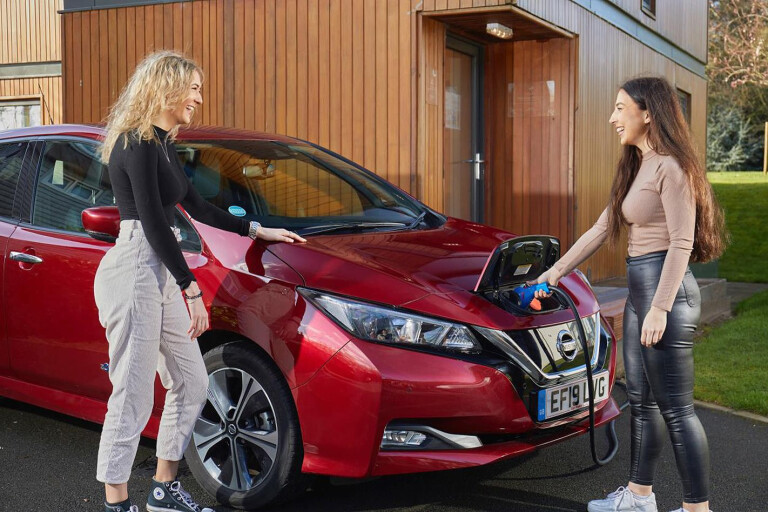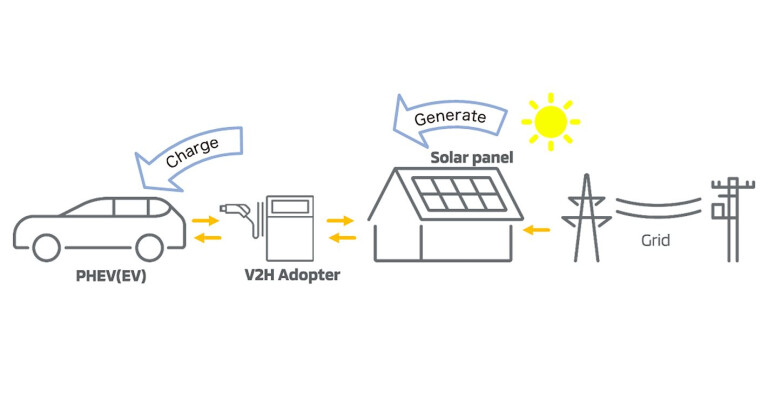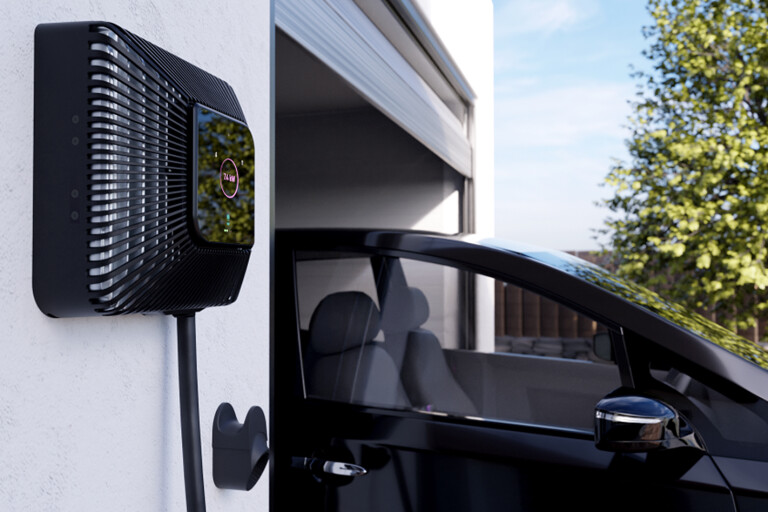
Electric vehicles can use the national electricity grid to draw a charge, but some EVs such as the Nissan Leaf and Mitsubishi Outlander PHEV can return the favour by supplying their reserve battery levels back to the grid in times of high demand.
The system, called Vehicle-to-grid (V2G), uses a two-way charging port connected to the home that can either draw or supply power between a battery-electric vehicle (BEV) or plug-in hybrid vehicle (PHEV) and the electricity grid, depending on where it’s needed most.
This technology can help stabilise power supply during times of high demand and combat against blackouts, though the concept unlikely to have a real impact for several years or until there is a sufficient number of EVs.
How does vehicle-to-grid work?
Many EV drivers are only using a fraction of their battery capacity each day, and the growing number of them on our roads means there is an increasing amount of spare energy that could be returned to the electricity grid.
This could be of mutual benefit the power companies and EV owner - the companies won't need to invest as much in additional power generation sources to meet growing demand, and EV owners could be paid for their electricity.

For V2G to work, a suitably equipped EV needs to be plugged into a two-way charger with an inverter, which can charge the battery or draw power from it.
When the EV battery is full you can allow the inverter to draw energy from it.
This will happen automatically when power is required from the grid and you can set how much power can be drawn to ensure you have enough battery charge for your driving needs.
V2G is most effective if the EV has been charged via solar panels as there is no initial drain on the grid.
What equipment do you need for V2G?
Unfortunately, you can't return battery power to the grid via the standard wall socket or charger. You will need a bi-directional AC or DC charger.

The main issue with V2G capable wall chargers, for now, is cost. While you can get a one-way wall-charger for about $1500 the bi-direction units cost several times more.
The good news is there are more options entering the market which will eventually see prices come down.
Is vehicle-to-grid the same as vehicle-to-home?
Vehicle-to-Home technology works the same way as V2G but charges a home battery or powers household appliances via a solar inverter unit.
This could be very handy during a blackout.

For those with solar panels, a car could be used to store the sun’s energy during the day and then redeploy it to power a house at night.
Alternatively, you could charge your car at work, a shopping centre or a public site and then drive home and power your house for free.
What electric cars are capable of V2G
At this stage, the second-generation Nissan Leaf and 2021-model Mitsubishi PHEV are the only vehicles in Australia with V2G of V2H capability.
Other carmakers, including Mercedes-Benz, Audi and Volkswagen are also working to introduce the technology.
COMMENTS